
Hazel Eyes: Unraveling the Mystery of This Unique Color
Posted by Team Debby on 2nd Jan 2024
Hazel Eyes: Unraveling the Mystery of This Unique Color
Hazel eyes are one of the most intriguing eye colors, characterized by a combination of greens, browns, and golds. Unlike the more common brown or blue eyes, hazel eyes often appear to change color in different lighting conditions. This dynamic quality is due to the varying concentration and distribution of melanin in the iris, the colored part of the eye that surrounds the pupil.
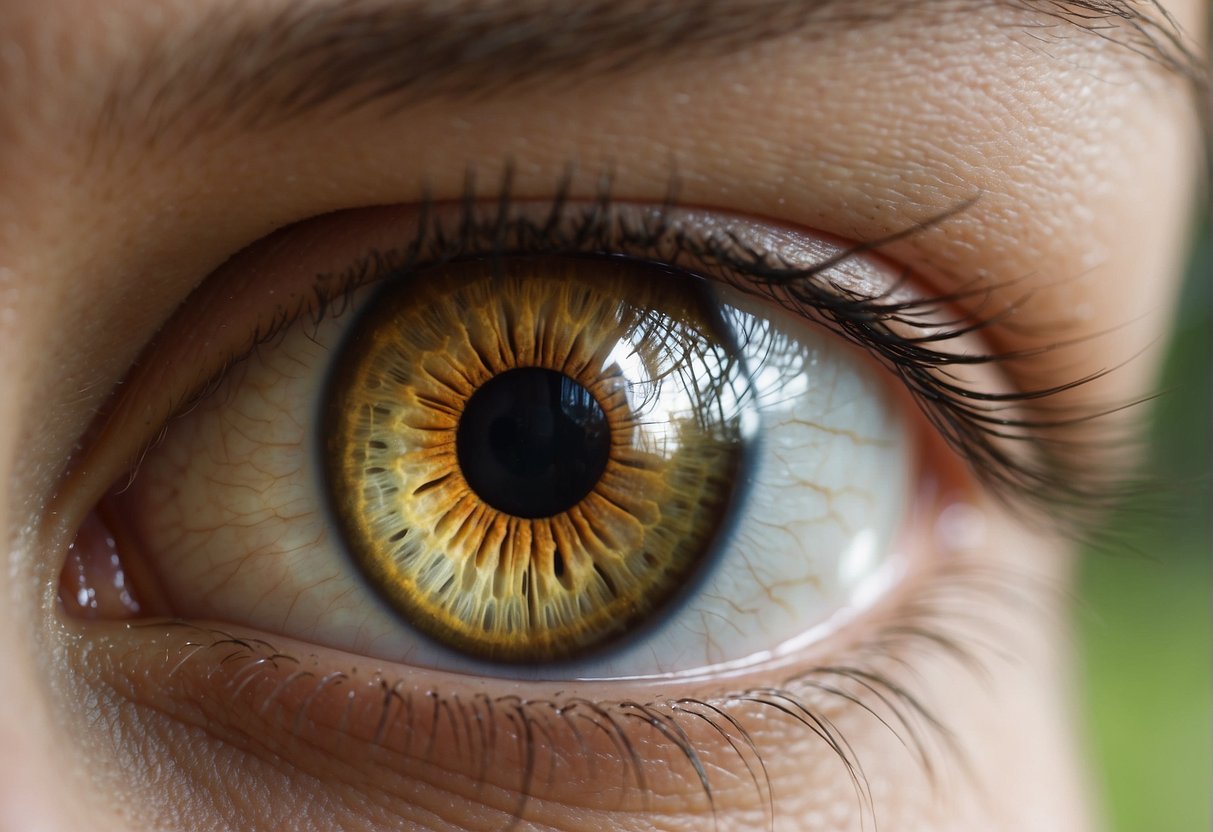
We understand that eye color is primarily determined by genetics and the interplay of multiple genes. Hazel eyes, in particular, are less understood than other eye colors due to the complexity of the shades involved. While the genetics of blue and brown eyes have been extensively researched, hazel eyes present a unique blend that offers a fascinating window into the world of genetics and inheritance patterns.
Our exploration into the science behind hazel eyes reveals the subtle dance of genetics and environment coming together to create this captivating eye color. We see that factors beyond just heredity can influence the shade and tone of hazel eyes, including age and lighting. Being a rare eye color, hazel eyes are often celebrated for their beauty and the sense of mystery they bestow upon those who possess them.
Genetics of Hazel Eyes

The genetics of hazel eyes involves a complex interplay of multiple genes and the variation in melanin distribution. We'll explore the specific genetic factors, how genes interact, and the nature of this polygenic trait.
Genetic Factors
Hazel eyes result from a combination of genes that influence the production and distribution of melanin, the pigment that gives color to our eyes. Two significant genes, OCA2 and HERC2, are primarily associated with eye color variation. The OCA2 gene helps regulate the amount of melanin produced, while variants near the HERC2 gene can turn the OCA2 gene on or off. The specific variants and mutations within these genes largely determine the range and intensity of eye color from blue to hazel and brown.
Gene Interaction
The interaction between OCA2 and HERC2 is a focal point in understanding the genetics of hazel eyes. For instance, a single nucleotide polymorphism (SNP) in the HERC2 gene can impact the expression of the OCA2 gene, thereby influencing melanin levels. We consider these intricate gene interactions to be a part of the broader mechanism behind the inheritance of eye color, reflecting a dynamic relationship rather than a single gene effect.
Polygenic Trait
Eye color, including hazel, is a polygenic trait, meaning it's influenced by multiple genes. While OCA2 and HERC2 play crucial roles, we must acknowledge the contribution of additional genes such as TYR and others involved in pigmentation. Each gene contributes a certain amount to the pigmentary endowment of the iris, which results in the rich variety of hazel eye shades observed in the human population. Genetic studies have increasingly highlighted the complex nature of inheritance patterns and gene networks responsible for the nuances in eye color.
Pigmentation and Color Variation
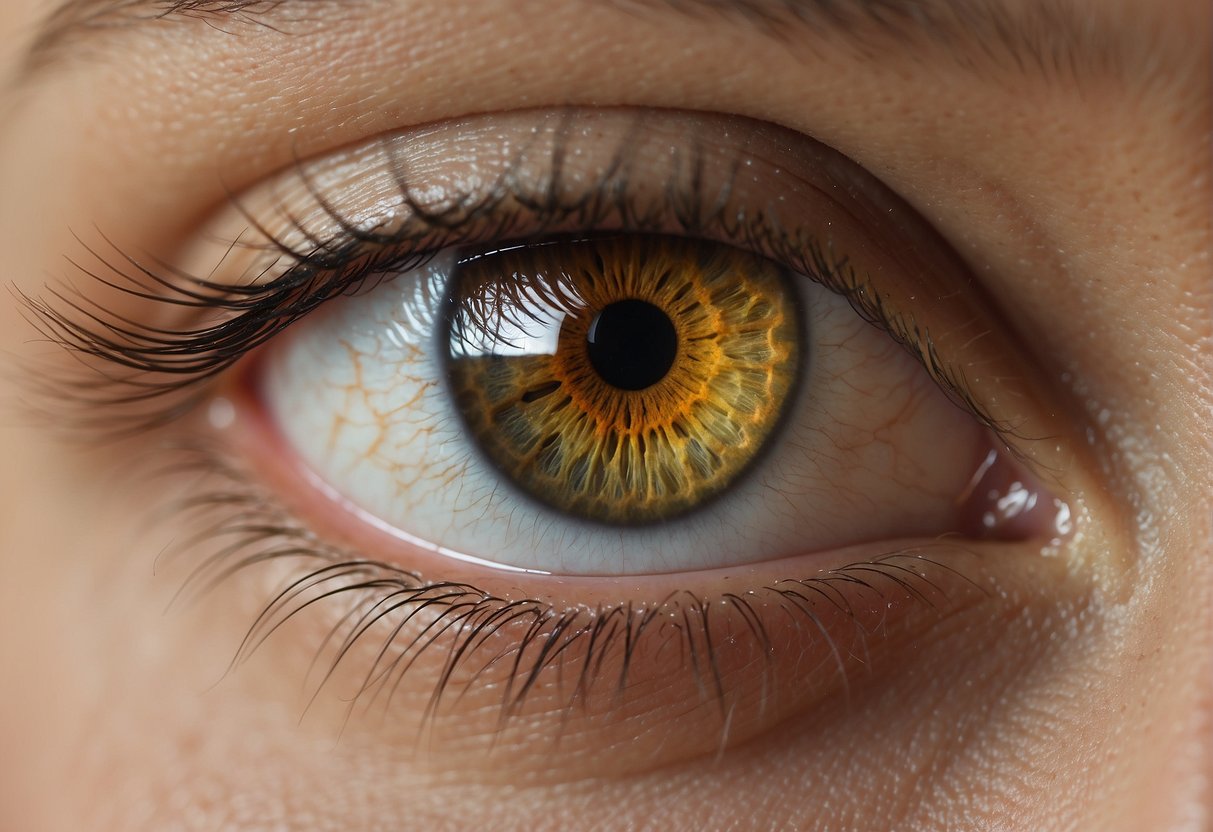
In understanding hazel eyes, we must focus on the type of melanin responsible, the color spectrum present, and the potential for iris color changes over time.
Melanin Types
Melanin is the primary pigment found in the iris of the eyes, and its concentration and type determine the eye color. Two main types of melanin are involved:
- Eumelanin: Provides brown or black color; high levels of eumelanin result in darker eyes.
- Pheomelanin: Gives a red or yellow hue; this melanin appears more prominently in lighter eyes.
The unique combination and density of these melanins contribute to the distinct coloration of hazel eyes.
Color Spectrum
Hazel eyes exhibit a remarkable color spectrum, typically displaying a combination of green, gold, and brown hues. This variation depends on:
- Light Absorption: Melanin absorbs certain wavelengths of light, affecting the color manifestation.
- Rayleigh Scattering: Similar to the sky appearing blue, the scattering leads to the diffuse reflection of light, influencing perceived eye color.
Due to these factors, hazel eyes can appear to change color under different lighting conditions, exhibiting a wide range of shades.
Iris Color Changes
Over the course of a person's life, the color of their iris may shift due to changes in melanin levels. Factors influencing these changes can include:
- Age-related Pigmentation Changes: The density of melanin in the eyes can increase or decrease as we age.
- Environmental Factors: Exposure to the sun can stimulate melanin production, potentially altering iris color slightly.
While significant color change is uncommon, subtle variations may occur, contributing to the dynamic appearance of hazel eyes.
Population Distribution

We find that the distribution of hazel eyes varies significantly across different populations and regions due to genetic diversity and historical migrations.
Global Prevalence
Hazel eyes are relatively rare on a global scale, present in approximately 5% to 8% of the world's population. This eye color is a result of the moderate amount of melanin in the iris, which can appear to change color from green to brown based on lighting and environment.
Regional Variations
When we look at regional differences, the prevalence of hazel eyes shows interesting patterns:
- United States: Approximately 18% of the population in the U.S. exhibits hazel eyes, with higher concentrations in people of European descent.
- Brazil: In Brazil, a diverse genetic pool has resulted in a notable percentage of the population with hazel eyes, especially among the population with mixed European and Brazilian heritage.
- Spanish: Hazel eyes can be found in Spain but are less common than in other European countries.
Moving eastward:
- North African and Middle Eastern: Hazel eyes are also found among individuals in North African and Middle Eastern countries, reflecting a complex interaction of genetic factors.
- Northern and Eastern Europe: These regions have a higher incidence of hazel eyes, particularly in countries such as Poland and Russia.
In contrast:
- Central Asia: Central Asian populations have a lower occurrence of hazel eyes, with brown being the predominant eye color.
Visual Characteristics of Hazel Eyes
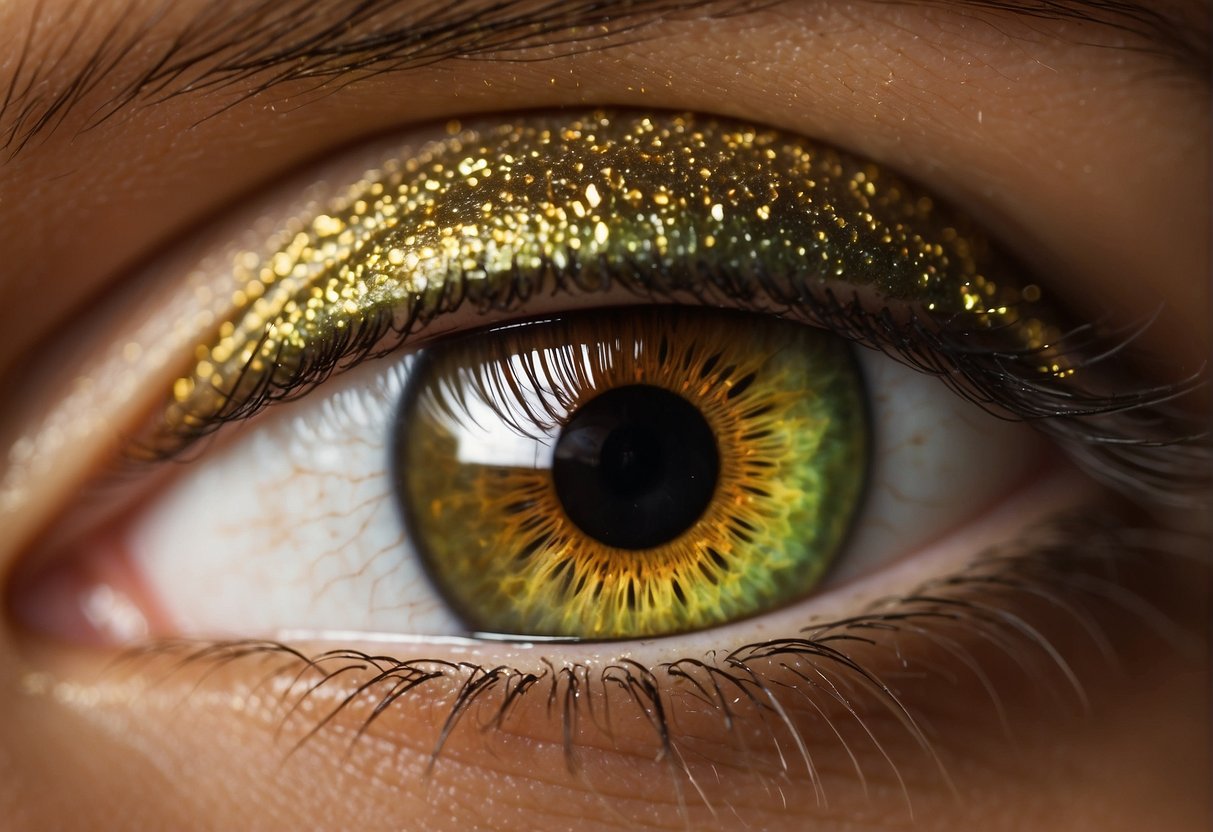
Hazel eyes are renowned for their multi-faceted color patterns, which often comprise hues that seem to merge both green and brown. These eyes can appear to shift in color from green to brown, or even include some spots of blue, particularly dependent on the lighting and the background colors around them.
Unique Features
Hazel eyes are quite distinctive due to their color variance, which sets them apart from purely green, brown, or blue eyes. The combination of colors within hazel eyes often results in speckles or a starburst pattern, especially around the pupil, where a ring of another color can be pronounced.
- Distinct Patterns: Ranges from solid hues to complex patterns.
- Color Diversity: Specks or rings of green, brown, and sometimes blue.
Iris Complexity
Our examination of the iris of hazel eyes typically reveals a more intricate array of colors than found in single-color irises. Brown and green are the primary colors, with brown often concentrated around the pupil and green towards the outer iris. In some individuals, particularly those of Spanish descent, we may notice a greater intensity of these colors, enhancing their uniqueness.
- Primary Colors: Green and brown.
- Ring Variation: Often a brown ring around the pupil.
- Color Intensity: Can vary, sometimes more intense in individuals with Spanish heritage.
Eye Health and Hazel Eyes
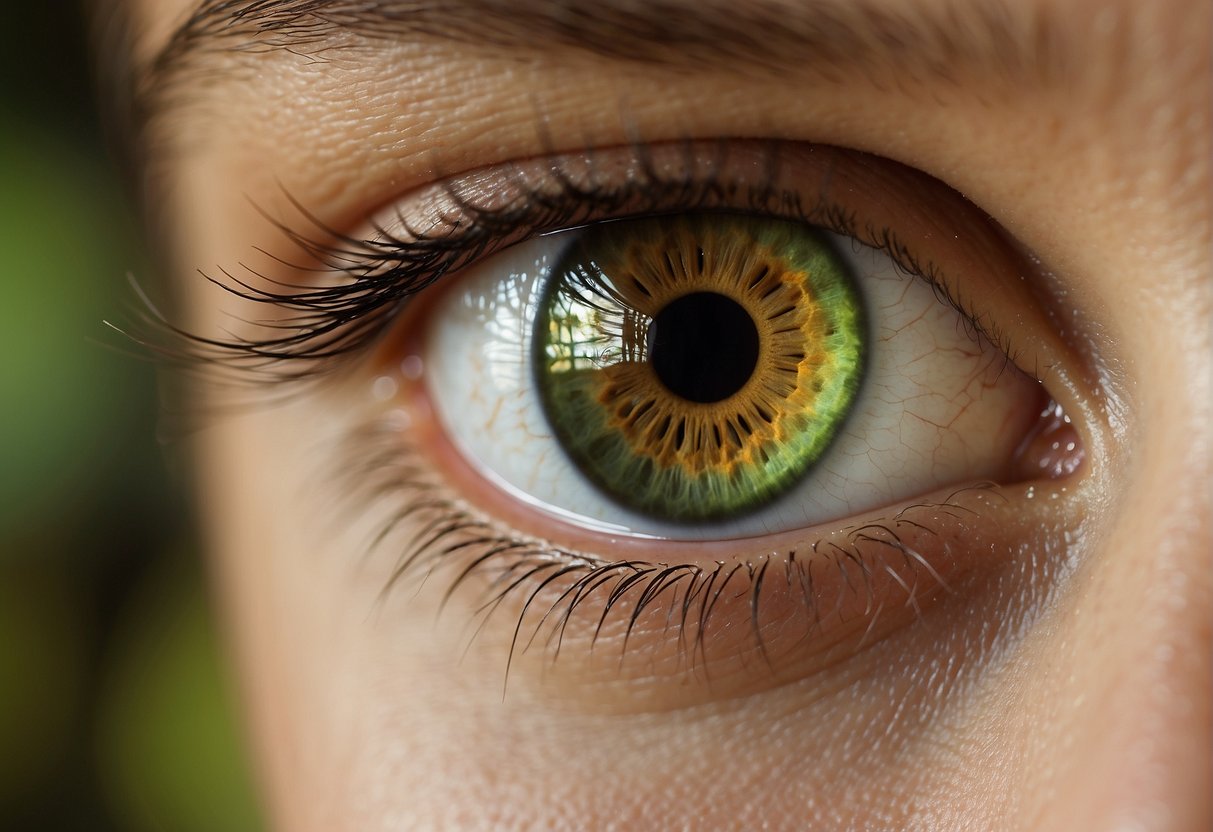
We understand that individuals with hazel eyes can experience unique health considerations, just as those with any eye color. Proper care includes awareness of common conditions and the significance of regular eye exams.
Common Conditions
Individuals with hazel eyes can be at risk of certain eye health issues, albeit color has less impact on health than genetic factors. We can list macular degeneration and cataracts as conditions that might occur regardless of eye color; however, they are not specifically more prevalent in those with hazel eyes.
- Macular Degeneration: This affects the central part of the retina and can lead to vision loss if untreated. It's critical to be vigilant for early signs, such as blurred vision or straight lines appearing wavy.
- Eye Cancer: While rare, hazel-eyed individuals should know that eye melanoma, for instance, can develop in the cells that pigment the iris.
Regular Eye Exams
We emphasize the importance of regular eye exams to maintain the health of hazel eyes. Our doctors are equipped to detect early signs of potentially serious conditions during these check-ups.
- Frequency: Adults with hazel eyes should have a comprehensive eye exam every 1-2 years and discuss any specific concerns with their doctor.
- Detection: Exams often include testing for cataracts or signs of macular degeneration, among other conditions.
By prioritizing these exams, we can help safeguard our vision and take prompt action should any issues arise.
Cosmetic Enhancements
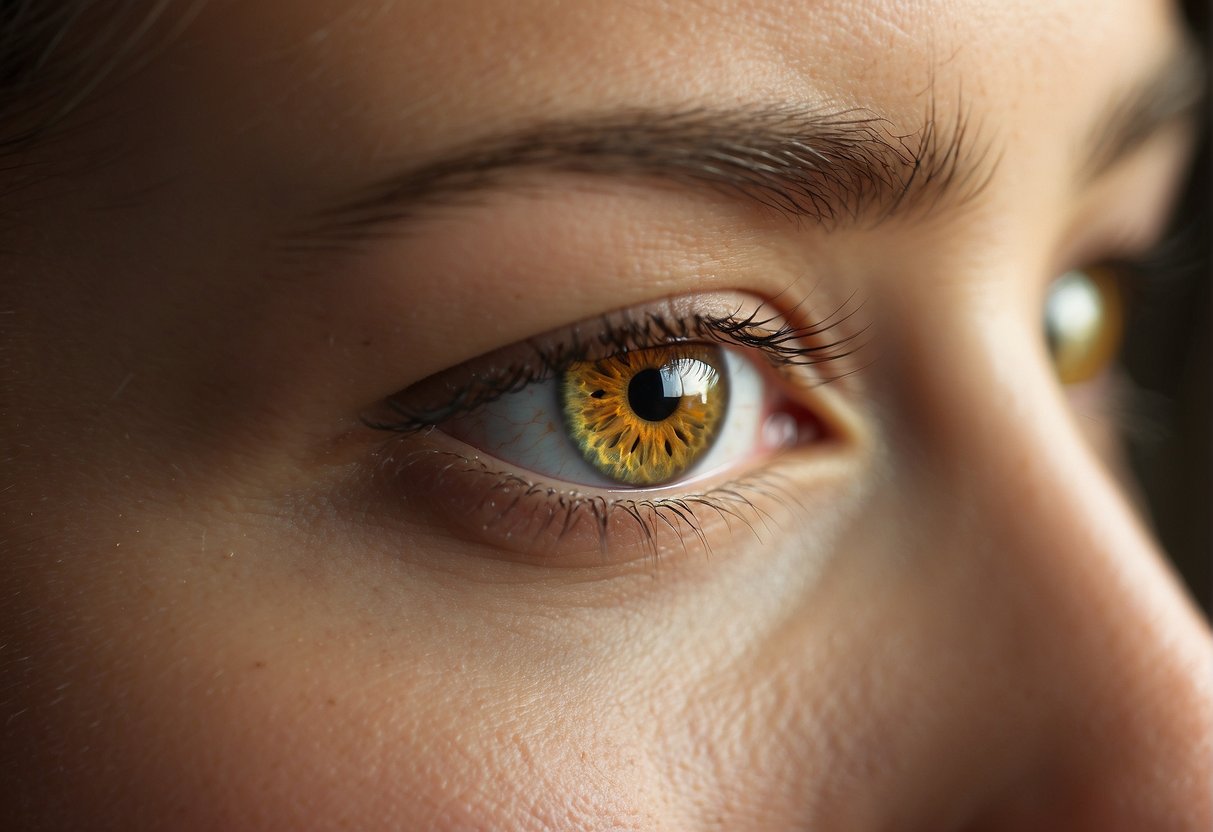
In our pursuit to accentuate the natural allure of hazel eyes, we have several cosmetic enhancements at our disposal. From contact lenses to advanced optical coatings, these options offer versatility and aesthetic appeal.
Contact Lenses
We turn to contact lenses for their ability to change or enhance eye color. Our choices include:
- Enhancement Tint Contact Lenses: Ideal for deepening the natural color of our hazel eyes. The translucent tint intensifies our existing eye color without altering it entirely.
- Opaque Tint Contact Lenses: These lenses are designed for a more dramatic change. They can transform our hazel eyes into any color we desire, from the deep blues to the richest browns.
Colored Tints
Colored tints are a viable option for those of us looking to modify the hue of our hazel eyes. We use colored contact lenses to achieve the following effects:
- Subtle Shifts: By selecting enhancement tints that are close to our natural eye color, we can make subtle shifts that bring out the golds and greens in our hazel eyes.
- Bold Changes: Opaque tints offer us the liberty to experiment with eye colors that are significantly different from our natural shade.
Optical Coatings
We leverage optical coatings to improve comfort and vision, such as:
- Anti-Reflective Coating: This coating significantly reduces glare and helps to protect our eyes from excessive light exposure. We recommend this for both spectacle wearers and those of us who use contact lenses.
By exploring these cosmetic enhancements, we optimize our sight while achieving our desired aesthetic. The technologies available to us today make the process convenient and effective.
Emotional and Environmental Effects

In this section, we explore the intricate relationship between emotions, environmental factors, and the unique appearance of hazel eyes.
Pupil Size and Emotions
Our emotions can significantly affect pupil size. When we experience strong emotions, such as joy or surprise, our pupils tend to dilate, while negative emotions such as anger or sadness may result in constriction. For individuals with hazel eyes, this change in pupil size can accentuate the various colors within the iris, creating a more dynamic appearance.
Example:
- Joy: Dilation → More notable green hues in hazel eyes.
- Anger: Constriction → Brown tones may appear more pronounced.
Lighting Impact on Appearance
Hazel eyes can appear to change color based on lighting conditions, a mesmerizing optical phenomenon. This effect is due to the varying concentration of melanin in the iris.
In bright light, pupils constrict, and the denser brown areas of the iris are more visible, often making the eyes seem browner. Conversely, in dimmer light, the pupils expand, and the lighter, greenish areas can become more prominent, potentially giving the eyes a greenish hue.
Lighting Examples:
- Bright sunlight:
- Pupil size: Constricted
- Prominent color: Brown
- Dim interior light:
- Pupil size: Expanded
- Prominent color: Green
By understanding these nuances, we appreciate the complexity and beauty of hazel eyes shaped by both our emotions and environmental lighting.
Cultural and Social Aspects

In our exploration of hazel eyes, we recognize their place in cultural symbolism and personal identity. Hazel eyes are rare, lending a sense of uniqueness to individuals who possess them.
Symbolism and Beliefs
Hazel eyes have a kaleidoscopic character, often reflecting changes in color based on lighting or clothing colors. This chameleon-like quality has fascinated various cultures, leading to myriad beliefs about their significance.
In some traditions, hazel eyes are seen to symbolize wisdom and a keen intellect, attributed to the seemingly ever-shifting gaze that mirrors the complexity of nature itself.
Considering their rarity, especially outside of Caucasian populations, hazel eyes are sometimes perceived as a genetic treasure by world atlases of human diversity.
- Rarity & Perception: Unique in their appearance, hazel eyes are less common than other eye colors, which can influence societal ideals of beauty and intrigue.
- Geographical Distribution: According to World Atlases, hazel eyes are predominantly found in regions inhabited by Caucasian ethnicities, while much less common elsewhere, enhancing their association with uniqueness.
Fashion and Identity
Hazel eyes often surface in discussions about fashion and identity; they are seen as a striking natural asset that can be accentuated through specific clothing and makeup choices to highlight their hues.
The variability of hazel eyes allows for diverse fashion expression, given that different colors can accentuate different shades within the iris.
People with hazel eyes may choose attire that brings out the golds, greens, or browns of their irises, using this unique feature as a cornerstone of their personal style.
- Personal Style: Our choice in apparel and accessories can accentuate the multifaceted nature of hazel eyes, making them a focal point of one’s identity.
- Makeup Trends: Makeup artists and enthusiasts often use shades that complement the complex mix of colors in hazel eyes, creating looks that enhance their natural beauty.
Through these cultural lenses, we see that hazel eyes are not just a biological trait but also a canvas for social and individual expression.
Common Myths and Misconceptions

Hazel eyes, often surrounded by an aura of mystery, are subject to several misconceptions. One of the most common beliefs we encounter is that hazel eyes are simply a blend of brown and green. However, it's the unique combination of melanin distribution and the Rayleigh scattering phenomenon that gives this eye color its dynamic range of shades—from golden or reddish to greenish hues.
| Myths | Facts |
|---|---|
| Hazel eyes change color dramatically | Changes are subtle and influenced by lighting and clothing colors. |
| Hazel and amber eyes are the same | Amber eyes have a solid golden or copper color, with no green. |
| Hazel eyes are a result of poor health | Eye color is genetically determined, not health-induced. |
When considering hazel and green eyes, we often confront the misconception that they are interchangeable. Hazel eyes actually possess a higher concentration of melanin around the eye's border, creating a multicolored appearance, whereas pure green eyes remain consistently green.
Another myth we hear is the association of hazel eyes with heterochromia, a condition where the eyes are of different colors or have multiple colors within a single iris. Heterochromia is quite rare, and hazel eyes typically don't signify this condition but merely display a normal variation in melanin distribution.
Finally, it's often thought that people with hazel eyes can substantially change their eye color at will or due to mood swings. This is a misconception; while lighting and environmental factors can cause perceptual changes in color, the melanin distribution remains constant. Our mood does not affect eye color.
Frequently Asked Questions
In this section, we address some of the most common curiosities regarding hazel eyes, providing clear, fact-based answers.
How can you distinguish hazel eyes from brown eyes?
Hazel eyes are typically a combination of green, brown, and gold hues, creating a multicolored appearance. Unlike brown eyes, which display a more uniform coloration, hazel eyes can exhibit variation in color patterns and may appear different in various lighting.
What factors contribute to the variation in shades of hazel eyes?
The variation in shades of hazel eyes is primarily due to the distribution and concentration of melanin and Rayleigh scattering. The interplay between these factors determines the specific hue and depth of color seen in each individual's hazel eyes.
How common are hazel eyes globally?
Hazel eyes are relatively rare, accounting for an estimated 5-8% of the world's population. This eye color is less common than brown, which is the most predominant worldwide.
Can hazel eye color change or appear different under certain lighting conditions?
Yes, hazel eyes can appear different under varying lighting conditions. The colors in hazel eyes may look more green, amber, or brownish depending on the type and intensity of the light due to the reflective properties of pigments within the iris.
What are the genetic mechanisms that result in hazel eye color?
The genetics of hazel eyes are complex and not completely understood. However, we know that it involves multiple genes and the levels of melanin production, which are influenced by both genetic inheritance and potentially environmental factors.
Which populations or ethnic groups are most likely to have hazel eyes?
Hazel eyes are most commonly found in people of European descent. This is particularly true for those from northern and central Europe. However, hazel eyes can occur in any ethnic group. Though, it may be less typical in some populations.

